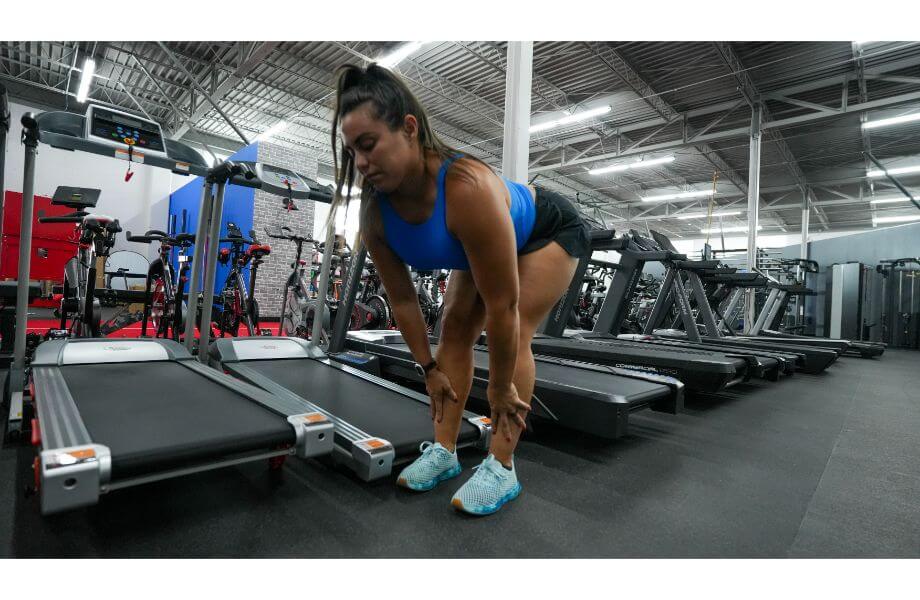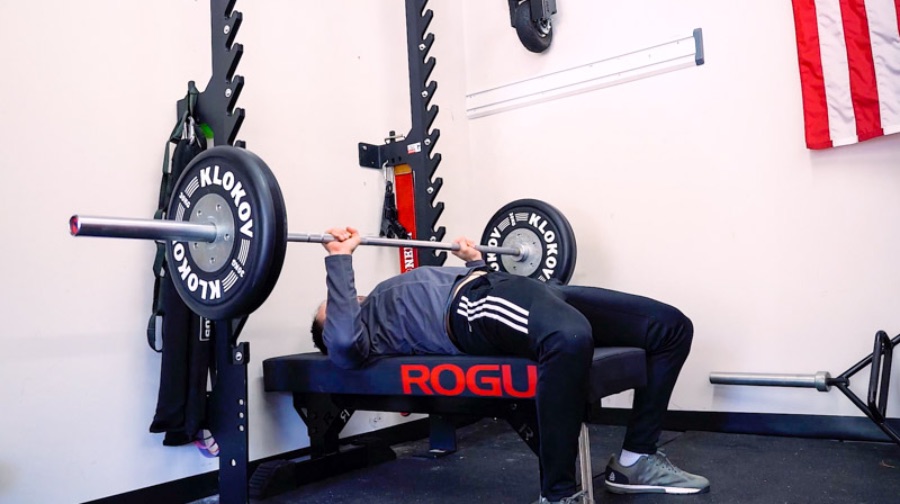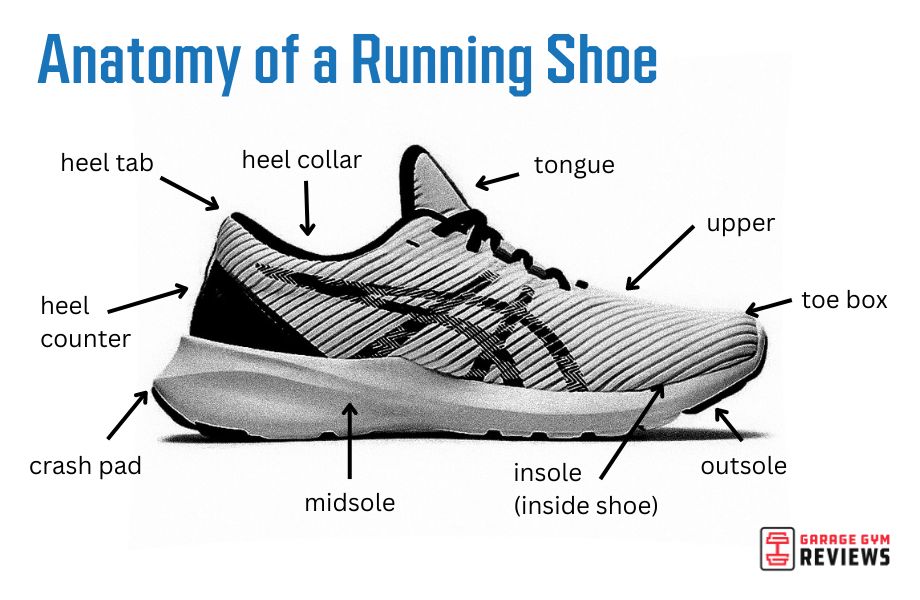Treadmill running offers more shock absorption than running outside on pavement, which means less stress on your lower body, including your knees and ankles. So if you’re experiencing knee pain from treadmill workouts, you’re probably thinking, “What gives?”
No, this doesn’t mean that you necessarily have bad knees; it’s more likely an indication that your running posture isn’t great or you’re wearing the wrong shoes. Joint pain can also signal an overuse injury so you may need to scale back your speed or the amount of miles you’re logging each week.
In this guide, we’ll dive into the main causes of knee pain from a treadmill and share some tips on how to alleviate that pain and potentially prevent it in the first place.
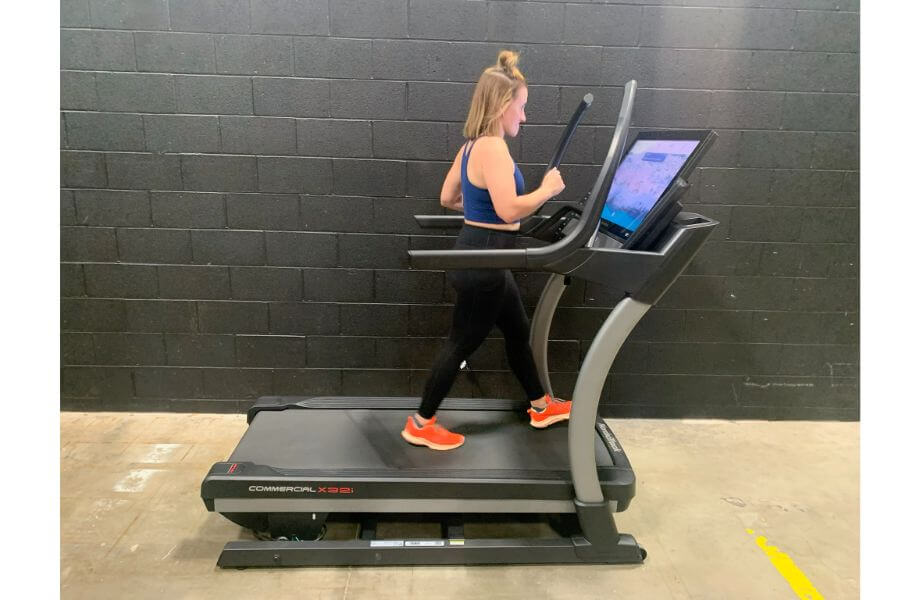
Causes of Knee Pain From a Treadmill
There are many things that can contribute to knee pain when working out on a treadmill. These are some of the most common factors.
Poor Posture
Poor running posture and improper running mechanics are two of the major contributors to knee pain.
“If you don’t have good posture, impact isn’t properly dispersed, which can lead to joint pain,” says Amanda Capritto, certified personal trainer and triathlete, adding that running mechanics also play a role.
“Your feet should land underneath your hips, not in front of you,” she says. “This gives you the power you need to propel yourself forward, without forcing your knees to absorb unnatural impact.”
The Wrong Shoes
Wearing the wrong shoes not only increases your risk of blisters and foot pain, it can also contribute to knee pain and shin splints. Running shoes are strategically designed to provide the proper support and shock absorption. But every shoe doesn’t work for all runners.
If you overpronate (or roll your foot inward) as you run, you need more support on the inner edge of the foot. If you underpronate (or roll your weight toward the outer edge of your foot), you need shoes with more flexibility and cushioning to support your arches.
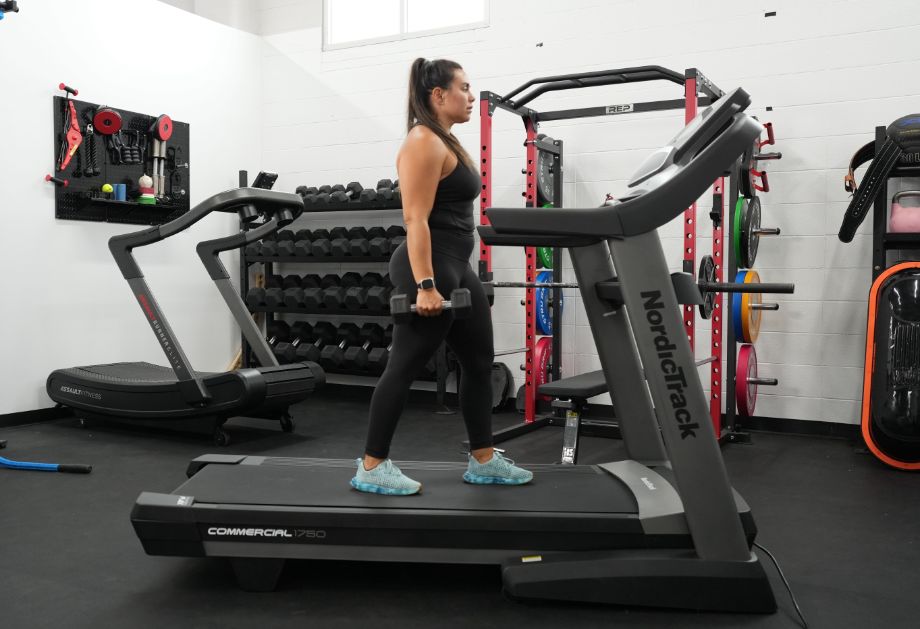
Aside from that, your running shoe should just feel comfortable. The toe box should have ample space and you shouldn’t feel any excess friction or rubbing as you move.
Too Much Incline and/or Decline
Running on an incline can help build the muscle groups in your lower body, namely the calves, quads, hamstrings, and glutes. But if the percent incline is very high for too long, it can lead to knee pain and overuse injuries like runner’s knee (more on that later).
“When you’re running on an incline, your ankle joints move less and your knees compensate to move your body uphill,” says Amanda. “Over time, this can put undue strain on your knees and become quite painful.”
The same can be said for spending too much time moving downhill, which can put excess stress on your knee joints and ligaments throughout your lower body.
Tight Muscles
Tight quads and iliotibial bands (IT bands) may also be an underlying factor.
“When your quads are tight, it can cause a misalignment of the patella (the kneecap) that causes instability in your leg and puts strain on the knee joint,” says Amanda. “Tight IT bands create extra friction that can lead to pain and swelling in the outer part of the knee.”
The Treadmill Itself
It’s quite possible that the treadmill you’re using just isn’t great. The running deck might not have ample cushioning. Or it may be a compact model that makes you feel cramped and messes with your natural stride.
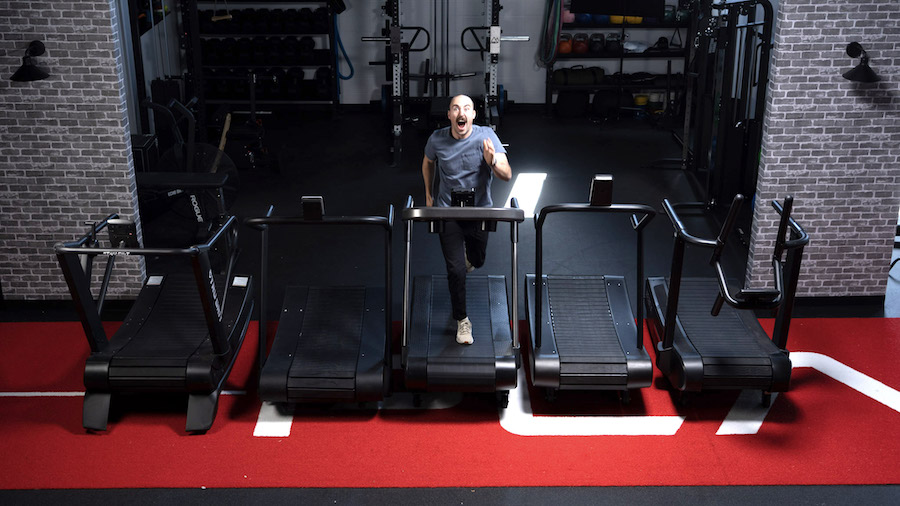
Runner’s Knee
If the pain isn’t exclusive to treadmill use, it’s possible that you have runner’s knee, officially called patellofemoral pain syndrome.
Runner’s knee, which is characterized by a dull pain in the front of the knee, can be caused by many things like tight hamstrings or Achilles tendons, improper foot support, weak quadriceps muscles, and/or excessive training or overuse.
If you have runner’s knee, the best course of action is to stop running for a few weeks and do lower-impact exercises, like swimming, rowing, or walking until it resolves. You can also work with a physical therapist to do strengthening exercises.
How To Alleviate Knee Pain From a Treadmill
In the short term, you can alleviate your knee pain by elevating your knees and icing them for 15 to 20 minutes a few times per day. But if you want to keep up with your treadmill workouts, you’ll have to find a way to prevent knee pain in the first place. Here are some things you can do.
Check Your Posture
Good posture is the foundation of pain-free running. Your back should be straight, your shoulders should be related and under your ears, and your pelvis should remain neutral.
“As you start to get fatigued, you may notice you start leaning forward or backward. Check in with yourself regularly and correct your posture when this happens,” says Amanda.
It’s also ideal to keep your head up and look straight ahead, with your arms bent at a 90-degree angle at your sides.
Get Properly Fitted for Shoes
If you’re choosing your running shoes based on looks or brand loyalty, it’s time for a fit check. A proper fitting shoe can help account for over- or underpronation, which makes a major difference in the development (or avoidance) of knee pain.
You may also need extra cushioning to help absorb shock and reduce impact on landing. A professional shoe fitter can help guide you to the right shoe for you.
RELATED: Best Treadmills for Bad Knees
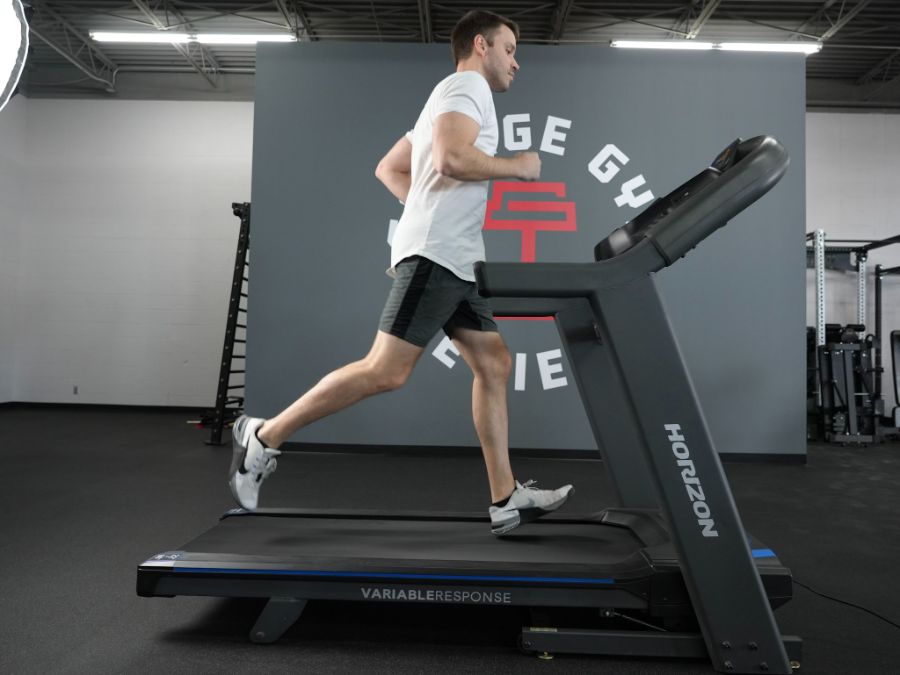
Swap Out Your Sneakers
Like improperly fitting shoes, worn out sneakers can also contribute to knee pain as well as blisters and/or sore arches.
“On average, you should replace your sneakers every 300 to 500 miles, but your foot strike, weight, and running mechanics can speed up or slow down the rate of breakdown,” says Amanda. “If the treads on your shoes are worn out, or the midsole feels tough, it’s time to get a new pair.”
Slow Down
It’s possible that you’re just putting more pressure on your body than your knee joints can handle. Running is a high-impact exercise, whereas walking is low-impact. You don’t have to move at a snail’s pace, but if you’re pushing yourself too hard, slow down until your body gets used to it or you can maintain the proper running form even at higher speeds.
Switch It Up
One of the benefits of a high-end treadmill is that you can incline and decline it. Take advantage of this incline range and don’t spend too much time moving up or downhill.
“An incline of 1% to 3% most closely simulates outdoor running and can be the best range for avoiding knee pain since it helps you get close to your natural running stride,” says Amanda. “A zero percent incline is unrealistically flat.”
Warm Up, Cool Down, and Stretch
Don’t skip these steps, no matter how advanced of a runner you are. Warming up and cooling down pre- and post-workout reduces your risk of knee injuries and pain. Stretching is also important, since tight quads and IT bands can contribute to knee pain.
Get a Better Treadmill
If you’ve tried all of the above and you’re still dealing with pain (and you’ve ruled out any underlying issues with your knee joint and/or patellar tendon), you might need an equipment upgrade. You don’t have to get the fanciest treadmill out there, but if you’re running on a budget model, upgrading can make a huge difference. The Sole F63 is one of Coop’s favorite mid-range models.
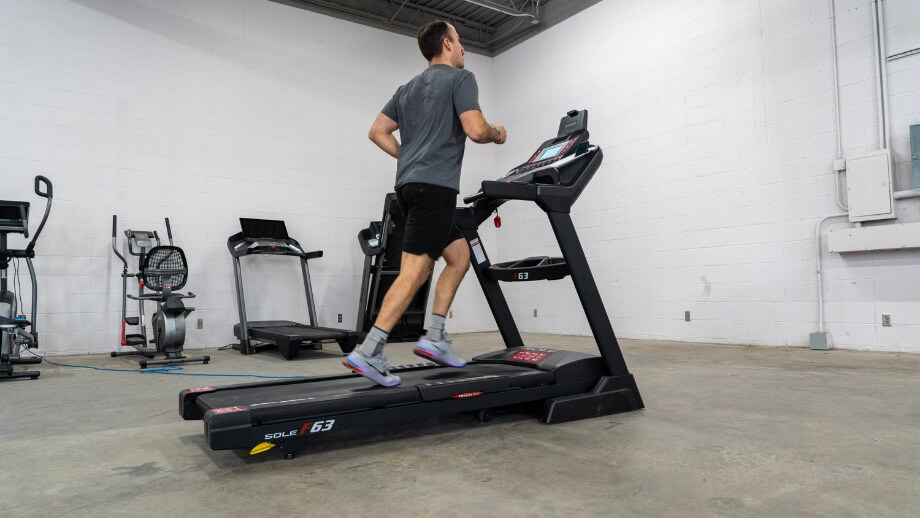
Of course, there’s also the option to get an elliptical instead. Ellipticals are easier on the joints than treadmills and come with similar benefits.
Knee Pain From a Treadmill: Final Thoughts
There’s no single reason for knee pain from a treadmill. Most commonly, it comes down to poor posture or improperly fitting shoes, but it may be a result of your intensity or lack of preventative stretching. If you’re doing everything right and still have persistent knee pain, check in with your healthcare provider to make sure there’s nothing going on underneath the surface.
RELATED: History of Treadmills
Knee Pain From a Treadmill: Q&A
Is the treadmill bad for your knees?
The treadmill isn’t bad for your knees. In fact, treadmill workouts are lower impact than running on pavement since the cushioned decks offer more shock absorption. If you have knee pain from a treadmill, it’s more likely that you need to correct your running posture, switch out your sneakers, and/or lower your speed to lower impact on your joints.
RELATED: 30 Minute Treadmill Workout
Is it OK to walk on the treadmill with knee pain?
Knee pain doesn’t mean you have to nix exercise completely. In fact, it’s quite the opposite. Light, low-impact movement like walking can actually make your knees feel better. In one study published in Arthritis and Rheumatology, researchers found that walking could help ward off knee pain, stiffness, and swelling in adults with osteoarthritis.
How do I know if my knee pain is serious?
The best way to determine the cause of your knee pain is to have your doctor do a full physical to rule out or identify any underlying health conditions. This is especially important if the pain is accompanied by swelling, redness, and/or warmth around the joint.


